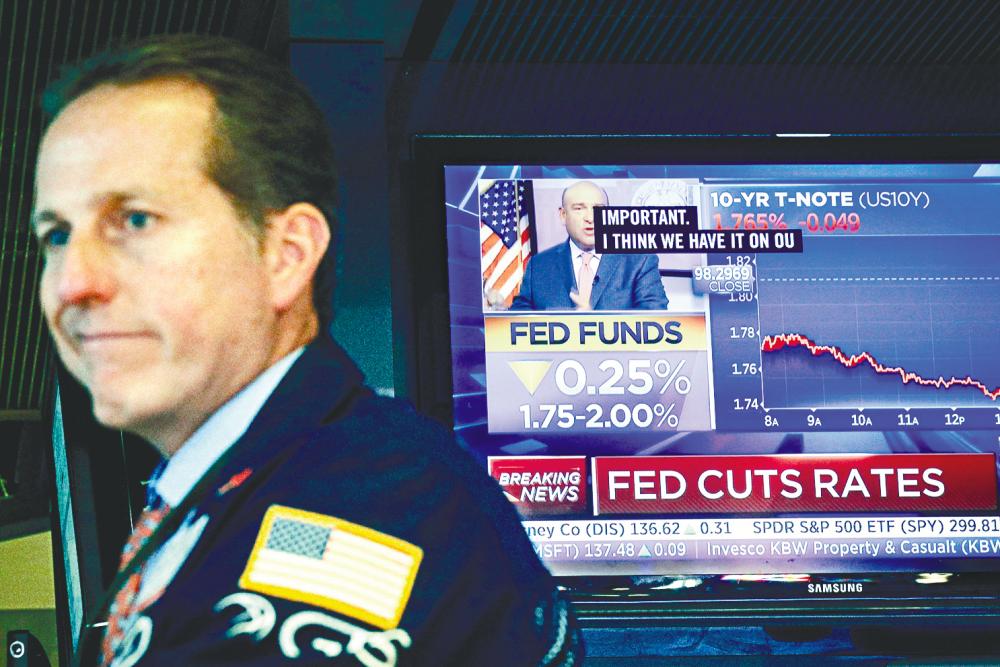PETALING JAYA: The ringgit and most other Asian currencies closed weaker against the US dollar today after the US Federal Reserve cut its benchmark interest rate for the second time this year.
Owing to the stronger US dollar, the ringgit depreciated as much as 0.3% to 4.1982 before closing at 4.1925 at 5pm, down 0.2%.
Bank Islam chief economist Dr Mohd Afzanizam Abdul Rashid said the recent stress in the money market in the US which led the Fed to reduce the interest rate on excess reserve to 1.8% from 2.1% seems to imply a credit crunch in the economy.
It was reported that money market rates for some overnight loans rose as high as 10%. In some sense, risk-off sentiment may have become prevalent as the event happened at a time when there are signs that the US economy is weakening.
“For instance, the US ISM Index for the manufacturing sector fell below the 50-point demarcation line to 49.1 points in August, and the ongoing trade war, the geopolitical development and UK Brexit all seem to indicate that the external sector remains wobbly, which led to higher demand for safe-haven currencies,” he told SunBiz.
After the Fed lowered interest rates, a slew of monetary policy decisions followed yesterday. Indonesia cut interest rates for the third month in a row, while Hong Kong slashed borrowing costs for the second time this year. Japan, Taiwan and Switzerland left their monetary policies unchanged.
HSBC head of FX strategy for the US Daragh Maher said in a report that it is unlikely that this easing will provoke a material change in the US dollar.
He said the Fed statement is little changed from July’s, retaining a cautiously confident tone on the outlook.
“Robust household consumption is helping to offset softness in business fixed investment and exports. The narrative regarding the lack of inflation pressures is retained, providing the breathing space for an easing despite forecasts of growth that remain at or above potential. Indeed, in similar fashion to the statement, the changes to the Fed’s economic projections were modest.”
Kenanga Research said though the Fed’s next move would continue to be a tough guessing game, it all boils down to how the global economic situation pans out over the next six to 12 months.
With trade tensions here to stay and a possible US-led currency war on the horizon, it is hard to see a catalyst for a speedy turnaround in global growth anytime soon. This means manufacturing and exports, Malaysia’s growth drivers, would remain weak for a longer duration. Coupled with slowing domestic demand and limited fiscal policy space to support the economy, it gives monetary policy a more significant role to play.
“This raises the probability that Bank Negara Malaysia (BNM) would cut the Overnight Policy Rate by 25 bps to 2.75%, the soonest being at its sixth and last Monetary Policy Committee meeting for the year on Nov 5, 2019,” said Kenanga.
HLIB Research said should US-China trade tensions continue with negative impact on the global economy and markets, it may lead the Fed to cut another 25bps towards the end of the year. It maintained its expectation for BNM to reduce the OPR by 25bps within six months.













